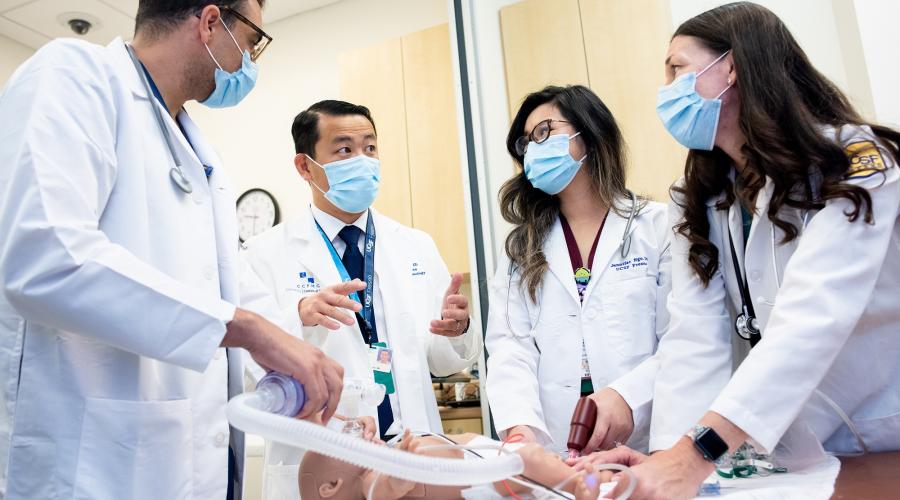
An Innovative Approach to Strengthening Healthcare Teams
When healthcare teams fail to collaborate effectively, patient care is compromised. Miscommunication can lead to medical errors, inconsistent care, and a breakdown in trust.
To address these challenges, interprofessional simulation training has become a key tool in medical education. These trainings immerse healthcare professionals—physicians, nurses, pharmacists, and more—in realistic emergency scenarios using mannequins. They practice together in a safe environment where mistakes are learning opportunities rather than risks to patients.
However, many training programs miss a critical element: addressing power dynamics and hierarchical barriers that can stifle communication and hinder team effectiveness. Recognizing this gap, the Department of Pediatrics at UC San Francisco led the development of a groundbreaking approach to simulation debriefing, designed to foster better collaboration and trust among healthcare team members. Their work, recently published in Advances in Simulation, reshapes how medical teams train and learn.
Breaking Down Barriers to Teamwork
“Reducing human errors in healthcare by improving interprofessional teamwork is a major aim of the National Academy of Medicine,” said Dr. Mindy Ju, first author of the study and an associate professor of Pediatrics in the Division of Critical Care at UCSF. “We believe the improvements we’ve seen in our simulation training translate directly to better patient care.”
Healthcare teams face obstacles like power imbalances, role ambiguity, and differences in communication styles. Traditional simulation debriefings often center on medical content and are dominated by physicians, leaving little room for nurses or other team members to voice their perspectives. Poor communication among team members has been found to be one of the top three leading causes of safety events that could lead to patient harm at UCSF Benioff Children’s Hospitals.
For example, in a previous session, a participant noticed a medication dosage discrepancy but hesitated to speak up. During the debrief, they remarked, “Maybe I should have said something,” but the conversation didn’t explore the reasons for their hesitation or strategies to encourage speaking up. This missed opportunity underscored the need for a new approach.
The UCSF team introduced guidelines to transform debriefings. These include explicitly addressing power dynamics, encouraging open discussions about hierarchy, and ensuring all participants—from nurses to physicians—are invited to share their thoughts. Nurses now play a more active role in facilitating debriefs, and teams are guided to explore questions that promote empathy, perspective-taking, and improved understanding of team members’ roles.
Transforming Emergency Training
Video recordings and participant feedback highlight the impact of UCSF’s new approach. Debriefs now feature deeper, more inclusive conversations about teamwork and collaboration. Traditional hierarchies are challenged—nurse facilitators lead more frequently, physicians listen more actively, and feedback flows across professions.
“The simulated scenarios mirror real emergencies, where clear communication and teamwork are vital to saving lives,” said Dr. Sandrijn van Schaik, senior author of the study and Vice Chair for Education at the UCSF Department of Pediatrics. “By openly addressing these dynamics in training, we’re preparing teams to handle live situations with greater confidence and competence.”
Leading the Way in Medical Education
UCSF’s evidence-based guidelines are setting a new standard for simulation training, ensuring healthcare teams are better equipped to serve patients.
“This work showcases how the Department of Pediatrics is transforming medical education to improve patient outcomes,” said van Schaik. “It’s about creating teams that trust one another, communicate openly, and deliver the best possible care.”
